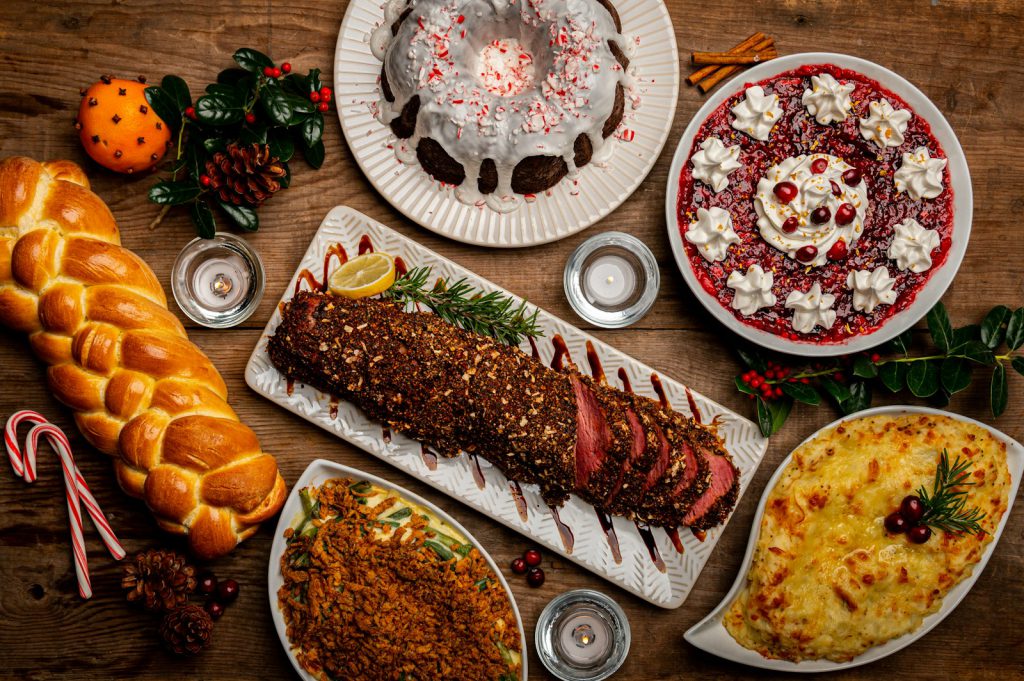Smoking brisket is an art form cherished by professional BBQ caterers and enthusiasts worldwide. The smoked brisket guide process involves a series of meticulous steps that, when mastered, produce a perfectly tender and flavorful brisket. This guide will walk you through each step, from selecting the right cut to mastering the smoking and resting techniques, ensuring you achieve the ultimate smoked brisket, that’s how we treat our high protein ready meal packs.
Selecting the Right Cut
- Whole Packer Brisket: The whole packer brisket includes both the flat and the point, providing a balanced mix of lean and fatty meat. This cut is ideal for smoking ready to eat brisket meals because the fat helps keep the meat moist and flavorful during the long cooking process. When selecting a brisket, look for one that has a uniform thickness to ensure even cooking.
- Flat vs. Point: The flat, or “first cut,” is leaner and more uniform in shape, making it easier to slice. The point, or “second cut,” is fattier and more flavorful, often used for burnt ends. For the best of both worlds, the whole packer brisket is the recommended choice.
- Grading and Quality: Briskets are graded by the USDA based on marbling and overall quality. Prime grade briskets have the most marbling, followed by Choice and Select. Higher marbling levels translate to more tenderness and flavor. For those seeking the best quality, consider purchasing a Prime grade brisket.
- Marbling: Marbling is the key to flavor and tenderness. Choose a brisket with visible streaks of fat running through the meat. This intramuscular fat melts during the smoking process, basting the meat from the inside out.
- Weight and Thickness: Opt for a brisket that weighs between 10-14 pounds (4.5-6.4 kg). This size is manageable for most smokers and cooks evenly. Ensure the brisket is uniformly thick to avoid undercooked or overcooked sections.
| Feature | Description |
|---|---|
| Whole Packer Brisket | Includes both flat and point, balanced meat |
| Flat vs. Point | Flat is leaner, point is fattier, whole packer is ideal |
| Grading | Prime, Choice, Select based on marbling |
| Marbling | Visible fat streaks for flavor and tenderness |
| Weight and Thickness | 10-14 pounds, uniform thickness for even cooking |
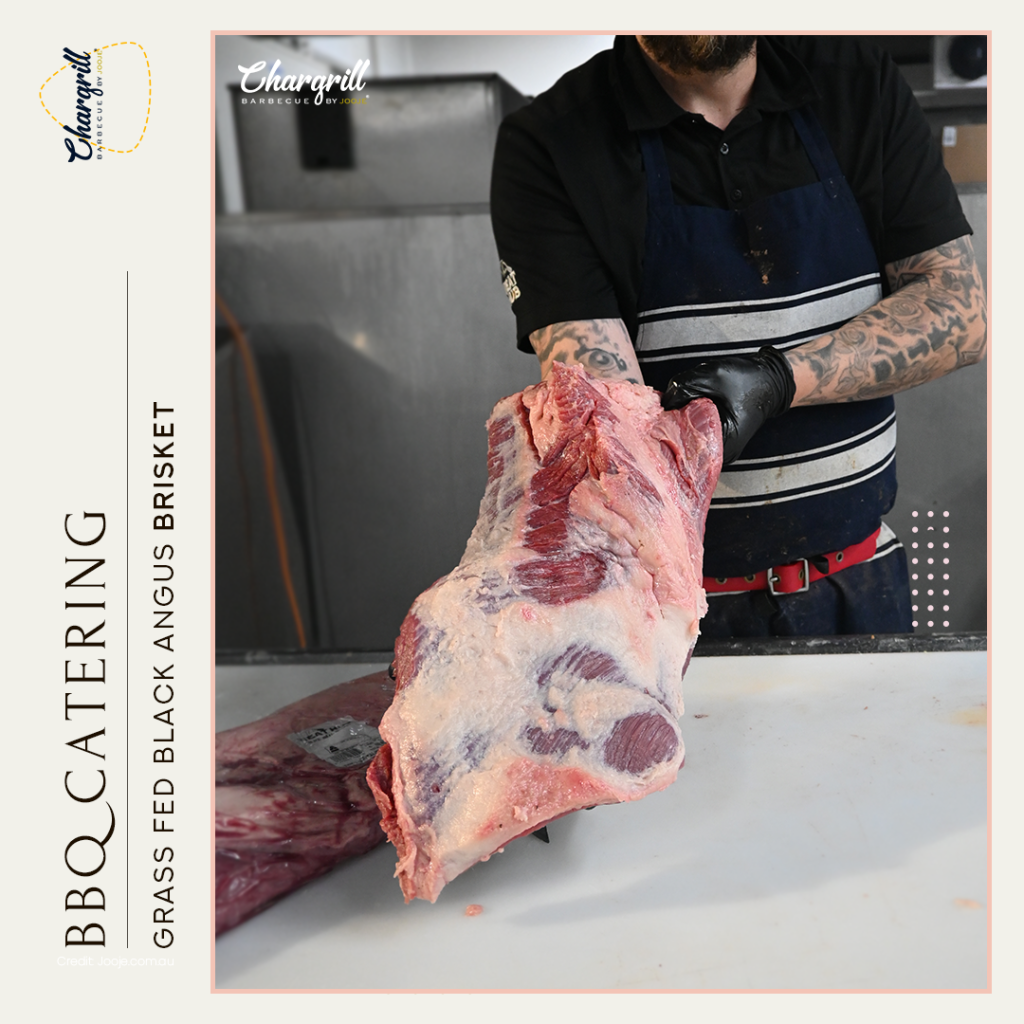
Preparing the Brisket
Trimming the Brisket: Proper trimming is essential for even cooking and optimal texture. Start by trimming the fat cap to about ¼ inch (0.6 cm). Remove any silver skin and tough connective tissue from the meat. This step ensures that the brisket cooks evenly and the seasoning penetrates the meat.
Seasoning the Brisket: Season your brisket generously with a rub. A classic BBQ rub typically includes salt, pepper, and garlic powder. Some variations add paprika, chili powder, and brown sugar for a touch of sweetness and complexity. Allow the brisket to sit at room temperature for 1-2 hours after seasoning to let the rub bond with the meat.
Using a Binder: Some pitmasters use a binder, such as mustard or olive oil, to help the rub adhere to the brisket. While optional, this step can enhance the crust formation and overall flavor of the meat.
Marinating and Injecting: For an extra flavor boost, consider marinating the brisket overnight or injecting it with a seasoned broth. This can add moisture and depth of flavor, especially for leaner cuts.
Prepping the Smoker: Preheat your smoker to a temperature range of 225-250°F (107-121°C). Use quality wood chips or pellets, such as oak, hickory, or mesquite, to ensure a clean smoke and robust flavor.
| Step | Description |
|---|---|
| Trimming | Trim fat cap to ¼ inch, remove silver skin and connective tissue |
| Seasoning | Apply rub generously, let sit for 1-2 hours |
| Binder | Optional, helps rub adhere, enhances crust |
| Marinating/Injecting | Adds moisture and flavor, especially for leaner cuts |
| Prepping Smoker | Preheat to 225-250°F, use quality wood for clean smoke |
Smoking Process
Setting Up the Smoker: Preheat your smoker to a temperature range of 225-250°F (107-121°C). Using quality wood chips or pellets, such as oak, hickory, or mesquite, ensures a clean smoke, which is essential for flavor.
Placing the Brisket: Place the brisket on the smoker, fat side up. This allows the melting fat to baste the meat as it cooks, keeping it moist and flavorful. Maintain a steady temperature throughout the smoking process. Fluctuations in temperature can result in uneven cooking and a less tender brisket.
The Stall: During the smoking process, the internal temperature of the brisket will eventually plateau around 150-160°F (65-71°C). This is known as the stall and occurs when moisture evaporates from the meat, cooling it down. To overcome the stall, wrap the brisket tightly in butcher paper or aluminum foil. This method, known as the Texas Crutch, helps to retain moisture and push through the stall more quickly.
Monitoring Internal Temperature: Use a digital meat thermometer to monitor the internal temperature. The ideal range for brisket is between 195-205°F (90-96°C). The brisket is done when the probe slides in with little resistance, similar to inserting it into softened butter.
Maintaining Moisture: Some pitmasters spritz or mop their brisket with a liquid mixture during the smoking process to enhance moisture and flavor. Common spritzes include apple juice, vinegar, and beer. Spritzing should be done every hour after the first two hours of smoking to avoid washing away the seasoning.
| Step | Description |
|---|---|
| Setting Up Smoker | Preheat to 225-250°F, use quality wood |
| Placing Brisket | Fat side up, maintain steady temperature |
| The Stall | Internal temp plateaus at 150-160°F, wrap to retain moisture |
| Monitoring Temp | Use digital thermometer, target 195-205°F |
| Maintaining Moisture | Spritz or mop with liquid every hour after 2 hours |

Monitoring and Maintaining Temperature
- Using a Thermometer: Use a digital meat thermometer to monitor the internal temperature of the brisket. Insert the probe into the thickest part of the meat, avoiding any fat or bone. The ideal temperature range for brisket is between 195-205°F (90-96°C). The brisket is done when the probe slides in with little resistance.
- Managing Heat: Consistent heat management is crucial for an even cook. Adjust your smoker vents and add fuel as needed to maintain a steady temperature. Avoid opening the smoker frequently, as this can cause temperature fluctuations and extend the cooking time.
- Spritzing and Mopping: Some pitmasters spritz or mop their brisket with a liquid mixture during the smoking process to enhance moisture and flavor. Common spritzes include apple juice, vinegar, and beer. Spritzing should be done every hour after the first two hours of smoking to avoid washing away the seasoning.
- Avoiding Flare-Ups: Monitor the smoker to prevent flare-ups caused by dripping fat. Place a drip pan underneath the brisket or use a water pan to maintain moisture and prevent excessive fat from causing flare-ups.
- Adjusting for Weather: Weather conditions can affect the smoking process. On cold or windy days, you may need to adjust the vents or add more fuel to maintain a consistent temperature. Conversely, on hot days, you may need to reduce the fuel or open the vents more to prevent overheating.
| Step | Description |
|---|---|
| Using Thermometer | Monitor internal temp, target 195-205°F |
| Managing Heat | Adjust vents, add fuel, avoid frequent opening |
| Spritzing/Mopping | Enhance moisture and flavor, avoid washing away seasoning |
| Avoiding Flare-Ups | Use drip pan or water pan, monitor for excessive fat |
| Adjusting for Weather | Adjust vents/fuel based on weather conditions |
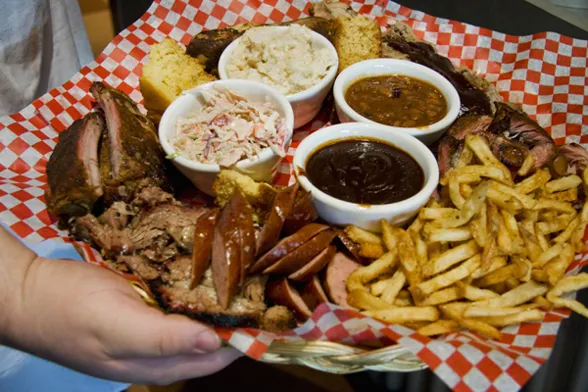
The Importance of Resting
- Resting the Brisket: After smoking, let the brisket rest for at least 1 hour. This allows the juices to redistribute throughout the meat, enhancing tenderness and moisture. Keeping the brisket wrapped during resting helps maintain its temperature and juice retention. All ready to eat bbq meals have rested and cooled down before vacuum sealing.
- Resting Techniques: There are various methods to rest a brisket. One common method is to place the wrapped brisket in a cooler (without ice) lined with towels to keep it warm. This technique can keep the brisket at an optimal serving temperature for several hours.
- Avoiding Over-Resting: While resting is crucial, over-resting can lead to a mushy texture. Aim to rest the brisket for 1-2 hours. If you need to hold the brisket for longer, keep it in a warm oven set to the lowest temperature or a warming drawer.
- Maintaining Moisture: Resting allows the juices to redistribute throughout the brisket, making each bite juicy and flavorful. Cutting into the brisket too soon can cause the juices to run out, resulting in a dry brisket.
- Serving Temperature: Ensure the brisket is at a proper serving temperature. After resting, the internal temperature of the brisket should be around 140-145°F (60-63°C). If it drops below this, reheat gently in a warm oven before slicing.
| Step | Description |
|---|---|
| Resting Brisket | Let rest for at least 1 hour to redistribute juices |
| Resting Techniques | Use cooler lined with towels, keep wrapped for warmth |
| Avoiding Over-Resting | Rest for 1-2 hours, use warm oven for longer holding |
| Maintaining Moisture | Resting allows juices to redistribute, prevents dryness |
| Serving Temperature | Ensure brisket is around 140-145°F for optimal serving |
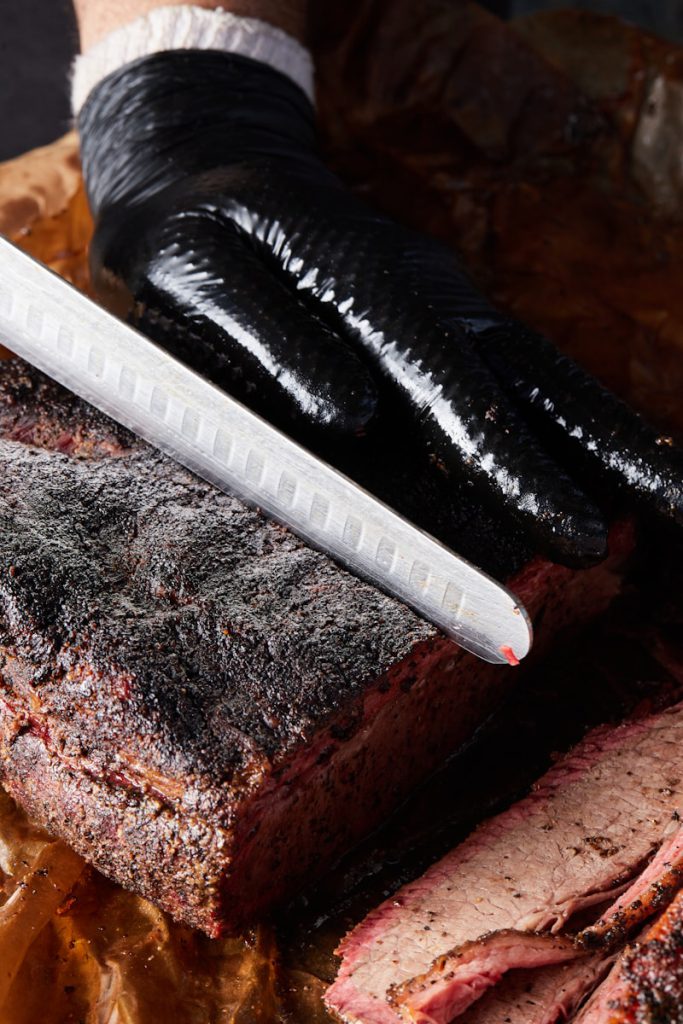
Slicing the Brisket
- Identifying the Grain: Before slicing, identify the direction of the grain in both the flat and the point. The grain refers to the direction in which the muscle fibers run. Slicing against the grain shortens these fibers, resulting in more tender bites.
- Slicing the Flat: Slice the flat section into pencil-thin slices, cutting against the grain. The flat is leaner and benefits from thinner slices to maintain tenderness.
- Slicing the Point: The point section can be sliced or chopped, depending on your preference. For burnt ends, cut the point into cubes and return them to the smoker with additional seasoning and sauce.
- Knife Selection: Use a long, sharp slicing knife to cut the brisket. A serrated knife or a carving knife with a granton edge can help make clean, precise cuts without tearing the meat.
- Serving Suggestions: Serve the sliced brisket on a platter, arranging the slices to showcase the bark and juicy interior. Burnt ends can be served separately as a flavorful, caramelized treat. Pair the brisket with classic BBQ sides like coleslaw, baked beans, and cornbread.
| Step | Description |
|---|---|
| Identifying Grain | Determine grain direction to slice against for tenderness |
| Slicing Flat | Cut pencil-thin slices against the grain |
| Slicing Point | Slice or chop, prepare burnt ends if desired |
| Knife Selection | Use long, sharp slicing knife for clean cuts |
| Serving Suggestions | Arrange slices to showcase bark, serve with classic sides |
Variations and Tips
- Binders and Spritzing: Some pitmasters use binders like mustard to help the rub adhere to the brisket. Spritzing with liquids like apple juice or a wine mix can enhance flavor and moisture during smoking. These techniques can add another layer of complexity to your brisket.
- Wood Selection: The choice of wood significantly impacts the flavor of the smoked brisket. Oak, hickory, and mesquite are excellent choices for smoking brisket. These woods provide a strong, smoky flavor that complements the richness of the meat. Experiment with different woods to find your preferred flavor profile.
- Temperature Variations: While the recommended temperature range for smoking brisket is 225-250°F (107-121°C), some pitmasters prefer a hotter and faster method, smoking at 275°F (135°C) to shorten the cooking time. This method requires close monitoring to prevent the brisket from drying out.
- Wrap Techniques: The type of wrap used during the stall can affect the final texture of the brisket. Butcher paper allows the meat to breathe and maintain a firmer bark, while aluminum foil creates a softer bark but retains more moisture.
- Flavor Additions: Enhance your brisket by adding unique flavors. Consider using different rubs, injecting marinades, or finishing with a glaze. These additions can make your brisket stand out with personalized flavor profiles.
| Step | Description |
|---|---|
| Binders/Spritzing | Use mustard as binder, spritz with apple juice or wine |
| Wood Selection | Choose oak, hickory, or mesquite for strong smoky flavor |
| Temperature Variations | Smoke at 225-250°F, or try 275°F for shorter cook time |
| Wrap Techniques | Butcher paper for firm bark, foil for more moisture |
| Flavor Additions | Experiment with rubs, injections, and glazes |
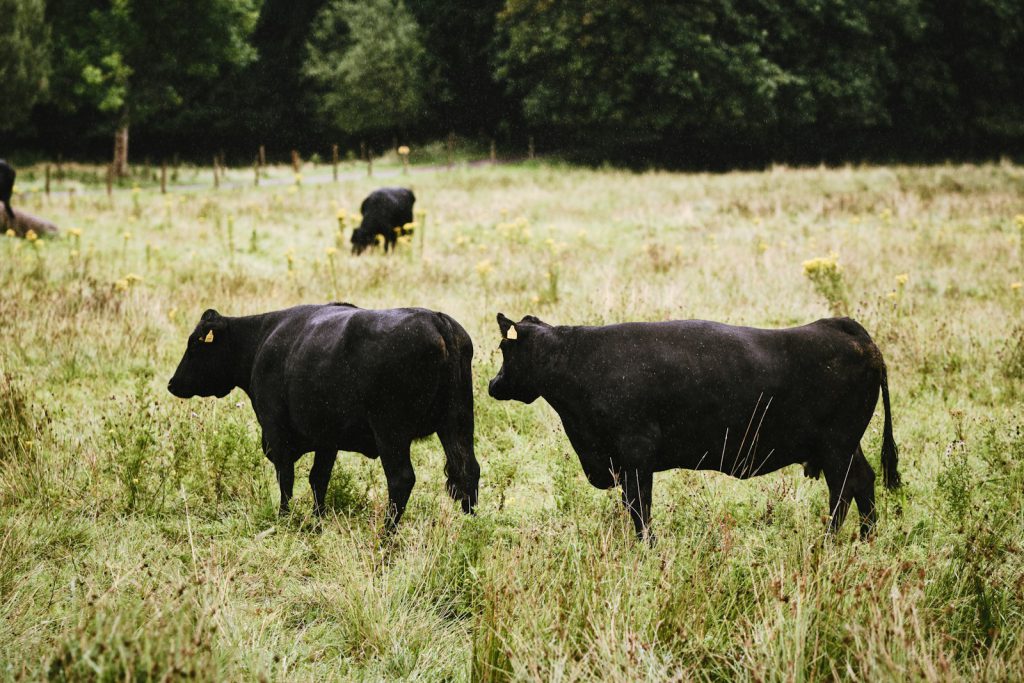
Black Angus
Black Angus beef is renowned for its superior marbling and tenderness, making it a popular choice for brisket. The Black Angus breed, originating from Scotland, has been selectively bred to produce high-quality beef with a rich, beefy flavor and excellent texture.
Marbling and Flavor: Black Angus brisket has a good amount of intramuscular fat, which melts during smoking, enhancing the flavor and juiciness of the meat. The robust and hearty flavor of Black Angus brisket makes it a favorite among BBQ enthusiasts.
Cooking Tips: When smoking Black Angus brisket, follow the same principles as with other briskets, but pay extra attention to the marbling. The high-fat content can make the brisket prone to flare-ups, so maintain a consistent temperature and avoid excessive heat.
Seasoning and Preparation: Season Black Angus brisket with a generous rub, and consider using a binder like mustard to help the rub adhere. Trim the fat cap to ¼ inch and remove any silver skin for even cooking and better flavor penetration.
Serving Suggestions: Black Angus brisket pairs well with bold BBQ sauces and traditional sides like potato salad, mac and cheese, and pickles. Its rich flavor also stands out on its own, making it ideal for sandwiches or as the centerpiece of a BBQ platter.
| Step | Description |
|---|---|
| Introduction | Renowned for marbling and tenderness, high-quality beef |
| Marbling/Flavor | Good intramuscular fat, robust and hearty flavor |
| Cooking Tips | Maintain consistent temperature, avoid flare-ups |
| Seasoning/Preparation | Use binder, generous rub, trim fat cap to ¼ inch |
| Serving Suggestions | Pair with bold sauces, traditional sides, or use in sandwiches |
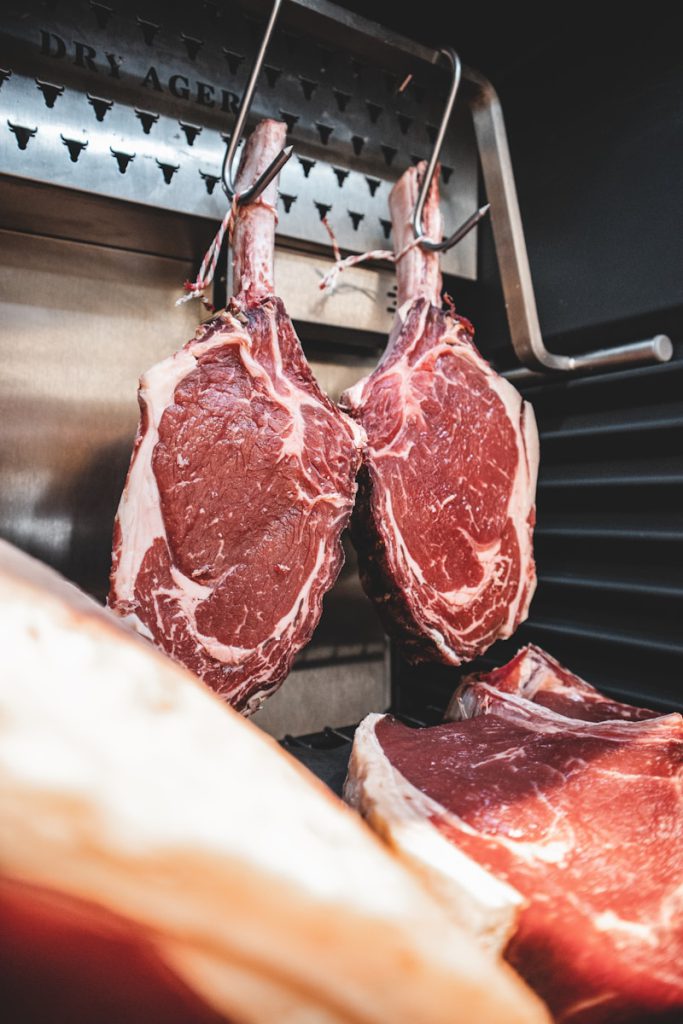
Wagyu
- Introduction to Wagyu: Wagyu beef, particularly the Japanese A5 grade, is celebrated for its exceptional marbling, tenderness, and buttery flavor. Wagyu brisket comes from cattle that are often treated with the utmost care and are fed a special diet to develop intense marbling.
- Superior Marbling: Wagyu brisket boasts superior marbling, with fine streaks of fat interwoven throughout the meat. This results in a rich, buttery texture and flavor. The high-fat content in Wagyu brisket renders down during the smoking process, infusing the meat with a deep, umami-rich flavor that is unparalleled.
- Cooking Tips: Smoking Wagyu brisket requires careful temperature management due to its high-fat content. Maintain a lower temperature to prevent the fat from rendering too quickly and causing flare-ups. The rich marbling allows for a shorter cooking time while still achieving tender and flavorful results.
- Seasoning and Preparation: Season Wagyu brisket with a simple rub of salt and pepper to let the natural flavor of the meat shine. Avoid overly complex seasonings that can overpower the delicate taste of Wagyu. Trim the fat cap to ¼ inch and remove any silver skin for even cooking.
- Serving Suggestions: Wagyu brisket is best enjoyed in thin slices to fully appreciate its buttery texture and rich flavor. Serve with light sides that complement the meat without overpowering it, such as steamed vegetables, simple salads, and light pickles.
| Step | Description |
|---|---|
| Introduction | Celebrated for exceptional marbling, tenderness, and flavor |
| Superior Marbling | Fine streaks of fat, rich buttery texture and flavor |
| Cooking Tips | Careful temperature management, prevent quick fat rendering |
| Seasoning/Preparation | Simple rub of salt and pepper, trim fat cap to ¼ inch |
| Serving Suggestions | Thin slices, light sides like vegetables and salads |
Comparison of Black Angus and Wagyu Brisket
- Marbling: Both Black Angus and Wagyu briskets are known for their marbling, but Wagyu stands out for its exceptional, fine streaks of fat throughout the meat. This marbling gives Wagyu a richer, more buttery texture compared to Black Angus.
- Flavor Profile: Black Angus brisket offers a robust, beefy flavor with good fat content. In contrast, Wagyu brisket delivers a more delicate, buttery, and umami-rich flavor due to its higher fat content and fine marbling.
- Texture: The texture of Wagyu brisket is melt-in-your-mouth tender, attributed to its extensive marbling. Black Angus, while also tender and juicy, has a slightly firmer texture compared to Wagyu.
- Cooking Time and Management: Wagyu brisket requires careful temperature management due to its high-fat content, which can render quickly and cause flare-ups. Black Angus brisket is more forgiving and can be smoked at traditional BBQ temperatures without as much risk.
- Cost: Wagyu brisket is significantly more expensive than Black Angus due to the breed’s care, diet, and marbling quality. Black Angus offers a high-quality option at a more accessible price point.
| Feature | Black Angus Brisket | Wagyu Brisket |
|---|---|---|
| Marbling | Good intramuscular fat | Exceptional, fine streaks of fat throughout |
| Flavor | Robust, hearty flavor | Rich, buttery, umami-rich flavor |
| Texture | Tender and juicy | Extremely tender, melt-in-your-mouth |
| Cooking Time/Management | 1-1.5 hours per pound | Requires careful temperature management |
| Cost | More affordable | Premium price due to superior quality and rarity |
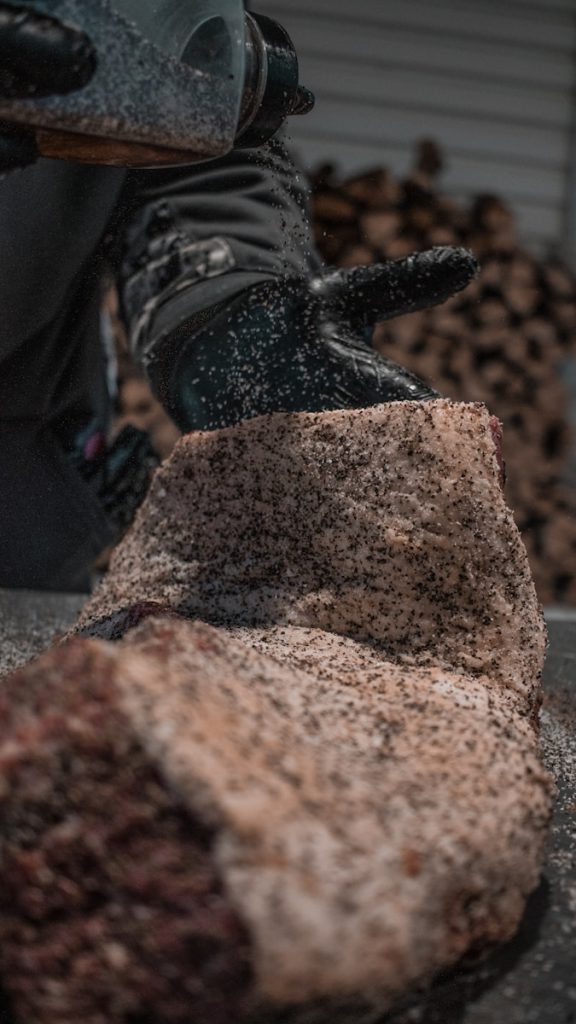
Advanced Techniques for Smoking Brisket
- Injecting Flavor: Injecting brisket with a marinade can enhance its flavor and moisture. Use a mixture of beef broth, Worcestershire sauce, and spices to inject into the brisket before smoking. This technique is particularly useful for leaner cuts.
- Reverse Searing: For a unique texture and flavor, try the reverse sear method. Smoke the brisket until it reaches an internal temperature of 180°F (82°C), then sear it on a hot grill to create a crispy bark.
- Double Wrapping: To achieve maximum moisture retention, consider double wrapping the brisket in both butcher paper and aluminum foil. This technique helps maintain moisture while allowing the meat to breathe.
- Resting in a Cambro: For optimal resting, place the wrapped brisket in a Cambro insulated box. This keeps the brisket at a consistent temperature, ensuring the juices redistribute evenly throughout the meat.
- Smoke Flavor Enhancement: Experiment with different wood combinations to enhance the smoke flavor. Try mixing hickory with a fruitwood like apple or cherry for a balanced, sweet-smoky flavor.
| Step | Description |
|---|---|
| Injecting Flavor | Use a marinade injection for enhanced flavor and moisture |
| Reverse Searing | Smoke to 180°F, then sear on hot grill for crispy bark |
| Double Wrapping | Use both butcher paper and foil for maximum moisture |
| Resting in Cambro | Insulated box for optimal resting and juice redistribution |
| Smoke Flavor Enhancement | Mix woods like hickory and apple for balanced flavor |
Common Mistakes and How to Avoid Them
- Over-Trimming: Removing too much fat can lead to a dry brisket. Always leave about ¼ inch of the fat cap to keep the meat moist during smoking.
- Under-Seasoning: Brisket is a large cut of meat and requires a generous amount of seasoning. Ensure you cover the entire surface with a thick layer of rub for optimal flavor.
- Inconsistent Temperature: Fluctuations in smoker temperature can result in uneven cooking. Use a digital thermometer to monitor and maintain a consistent temperature throughout the smoking process.
- Skipping the Rest: Not allowing the brisket to rest can cause the juices to run out when slicing, resulting in a dry brisket. Always rest the brisket for at least 1 hour before cutting.
- Improper Slicing: Slicing with the grain instead of against it results in tougher bites. Identify the grain direction and always slice against it for tender pieces.
| Mistake | Solution |
|---|---|
| Over-Trimming | Leave about ¼ inch of the fat cap to keep the meat moist |
| Under-Seasoning | Apply a generous layer of rub to cover the entire surface |
| Inconsistent Temp | Use a digital thermometer to maintain steady smoker temperature |
| Skipping the Rest | Rest the brisket for at least 1 hour to retain juices |
| Improper Slicing | Slice against the grain for tender pieces |
Mastering the art of smoking brisket requires attention to detail, patience, and practice. By selecting the right cut, properly preparing and seasoning the meat, maintaining consistent smoking conditions, and employing advanced techniques, you can achieve a perfectly smoked brisket that is tender, juicy, and full of flavor. Whether you choose Black Angus for its robust flavor or Wagyu for its luxurious texture, understanding the nuances of each step will elevate your BBQ skills and impress your guests.
References
- The Ultimate Guide to Smoking Beef Brisket: From Selection to Serving – The Meat Smoking Guy
- The Ultimate Guide to Smoking Beef Brisket – Mad Backyard
- Smoking Beef Brisket: The Ultimate Guide to Perfectly Smoked Brisket – Rowdy Hog Smokin BBQ
- Smoked Brisket – Perfect Every Time – Vindulge
- Texas Style Smoked Beef Brisket – Hey Grill Hey
- The Ultimate Guide to Smoking Brisket – PS Seasoning


